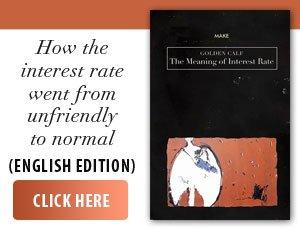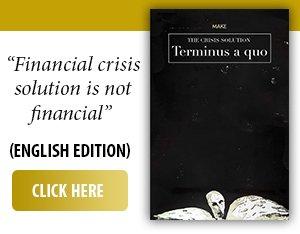Investors welcomed Federal Reserve Chairman Jerome Powell's speech at the weekend in Jackson Hole, Wyoming, which was seen as a positive signal for buying risky assets, in the hope that the U.S. central bank is ready to cut interest rates. However, his message was also received with reservations, as some see the risk of stagflation and fear that markets are too optimistic, according to an article published by Reuters last Saturday.
All three major U.S. stock indexes ended Friday's session with gains of more than 1.5% and near historic highs, reached following a rally that began in the second half of April after the Trump administration entered into negotiations on trade tariffs announced on the so-called "Liberation Day.” The S&P 500 index had a 10% increase at the end of last week compared to the beginning of the year, while, compared to the spring low, the appreciation was about 30%.
• TCW Group: "Investors are too optimistic about a "soft landing' and the possibility that the Fed can afford to gradually reduce interest rates"
In his final speech as Fed chairman at the Jackson Hole economic symposium, Powell hinted at a possible interest rate cut in September, but made no firm commitments, trying to maintain a balance between growing risks in the labor market and persistent concerns about inflation, writes Reuters.
"Powell gave the market what it wanted to hear. That's the bottom line,” said Keith Lerner, co-chief investment officer at Truist Wealth, the wealth management division of Truist Financial Corporation, quoted by MarketWatch.
The Fed chairman said that "negative pressures” in the labor market are increasing, and a rate cut in September may be justified. Powell also suggested that tariffs could still trigger an inflation problem, but he was more optimistic than in the past, considering that they are likely to cause only one-off price increases. On the other hand, the White House is pushing for monetary policy easing, which is fueling fears in the markets that political influence may cause the US central bank to cut interest rates too aggressively, the international press notes.
Matthew Miskin, co-director and investment strategist at asset manager Manulife John Hancock Investments, said, quoted by Reuters: "Powell confirmed the September rate cut, and the certainty of that is propagating positively in global markets. But the question remains - what happens after September? I think the markets are rushing too much here”
Futures traders were pricing in a 75% chance that the Fed will cut rates by 25 basis points in September, and a nearly 50% chance of two more cuts by the end of the year, according to data released late last week by the CME FedWatch Tool.
On the other hand, expectations for a rate cut are being tempered by new data - such as a sharp rise in wholesale prices in July - fueling concerns that persistently high inflation could limit the Fed's ability to support markets with significant rate cuts, according to Reuters.
"People are increasingly concerned that we are heading into a stagflationary scenario,” said Drew Matus, chief market strategist at MetLife Investment Management, referring to the combination of sluggish economic growth and persistent inflation. He said investors expected inflation to "persist for a while,” but the real question is how much more the economy can grow. "I think we'll have some growth, but it's not going to be anything too great,” Matus said, according to Reuters.
U.S. gross domestic product grew 3 percent in the second quarter of the year, after a 0.5 percent decline in the January-March period, the first decline since 2022. In the final quarter of last year, the U.S. economy grew 2.4 percent, according to Trading Economics.
Investors are also keeping an eye on additional inflation and labor market data due before the Federal Reserve's next meeting, which could influence interest rate decisions and potentially dampen a potential stock market rally.
Tom Graff, chief investment officer at financial planning firm Facet, said, quoted by Reuters: "Looking ahead to the next few months, rate cuts alone will not be enough to sustain the strength of stocks. If the economy does indeed show signs of stagnation and the labor market continues to deteriorate, the stock market rally could be jeopardized”.
Bret Barker, co-head of global fixed income at asset manager TCW Group, believes the U.S. economy has performed very well since the pandemic. However, his team believes investors are being too optimistic about a "soft landing” and the possibility of the Fed gradually cutting interest rates. "It sounds good. But if unemployment goes up, that's not at all favorable for risk assets," Barker said, according to MarketWatch.
• Edward Jones Investments: "Historically, it is normal for two to three market corrections to occur in a year, especially in periods characterized by high uncertainty"
Other analysts believe that investor optimism is justified. Paul Eitelman, chief global investment strategist at Russell Investments, said, quoted by Reuters: "If the Fed acts now and gradually reduces interest rates, easing the brakes on the economy a little, I think it makes perfect sense to see a rebound.”
Angelo Kourkafas, chief investment strategist at Edward Jones Investments, said: "Powell's comments are music to the market's ears. The fact that policy easing is still anticipated brings some comfort, as it shows that high valuations and market expectations are supported by the prospect of more accommodative monetary policy.”
Regarding inflation, Powell noted that a reasonable base case would be an increase above the current level - 2.7% in July, as measured by the Consumer Price Index - but he assessed that the increase is likely to be short-lived. Unless rates continue to rise steadily, inflation should stabilize over time, Mona Mahajan, chief investment strategist at Edward Jones, wrote in her latest weekly report.
"While commodity prices appear to have been contained, they are likely to rise in the coming months. However, assuming rates do not continue to rise steadily from now on, we believe they will be one-off increases that, over the long term, will have limited impact on monthly or annual inflation rates,” Mona Mahajan said.
Overall, the Edward Jones Investments team maintains its positive outlook for U.S. stocks. "After a strong rally in the stock market (...) we believe that some episodes of volatility are likely in the coming weeks. This is against the backdrop of the approaching months of September and October - seasonally more volatile periods - and the risk that inflation will increase and economic data from the United States will deteriorate in the coming quarters. However, historically speaking, it is normal to see two to three market corrections in a year, especially in periods of high uncertainty," the financial services company strategist wrote.













































Reader's Opinion